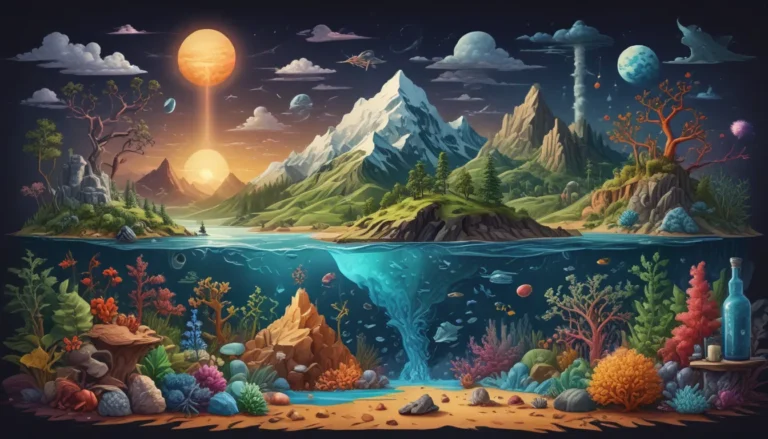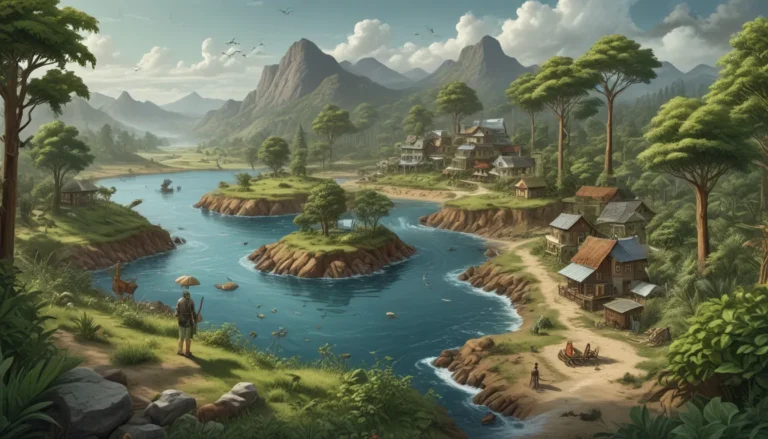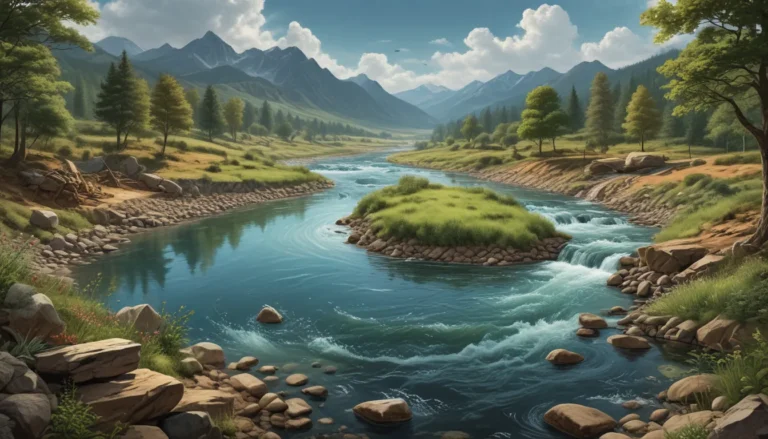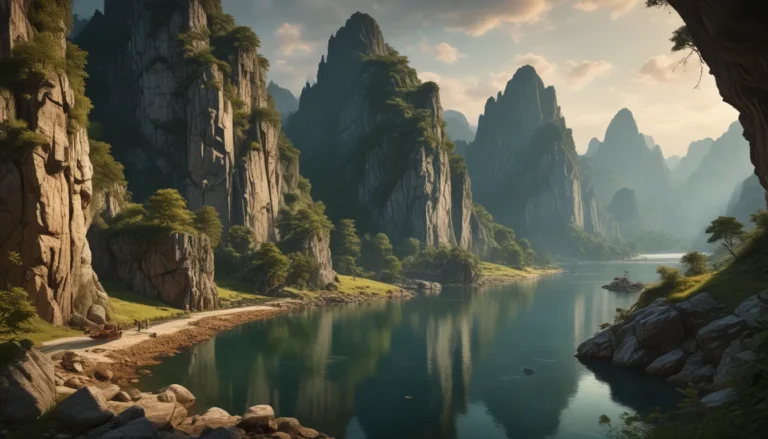A Note About Images: The images used in our articles are for illustration purposes only and may not exactly match the content. They are meant to engage readers, but the text should be relied upon for accurate information.
Have you ever wondered about the hidden marvels lurking beneath the ocean’s surface? Underwater volcanoes, also known as submarine volcanoes, are a captivating geological feature that continues to intrigue scientists and adventurers alike. From the mesmerizing formation process to the rich marine ecosystems they support, underwater volcanoes are a treasure trove of extraordinary facts waiting to be explored.
Delving Into the Depths: The Enigmatic World of Underwater Volcanoes
Submerged beneath the vast expanses of the ocean, underwater volcanoes are geological phenomena that create a world of their own beneath the waves. Let’s uncover some fascinating facts about these underwater giants and delve into the mysterious realm of submarine volcanoes.
The Formation of Underwater Volcanoes
- Submarine volcanoes, as the name suggests, are volcanoes that erupt underwater, giving rise to mesmerizing geological formations beneath the ocean’s surface.
- Estimated to number over one million, these submerged volcanoes are found in various regions, including mid-oceanic ridges, subduction zones, and hotspots.
- When an underwater volcano erupts, molten lava gradually accumulates over time, eventually surfacing above the water to form new islands or landmasses.
The Impact of Underwater Volcanic Eruptions
- The largest recorded underwater volcanic eruption occurred in 1815 when Mount Tambora in Indonesia unleashed massive tsunamis and caused global climate disruption, leading to the infamous “Year Without a Summer” in 1816.
- Underwater volcanic eruptions release mineral-rich plumes that support diverse marine life, including deep-sea organisms dependent on these nutrients.
- These eruptions can trigger the formation of hydrothermal vents, creating a unique habitat for deep-sea creatures adapted to extreme conditions.
Unveiling the Depths: Exploring the Geological Significance
- Underwater volcanoes can extend to depths exceeding 4,000 meters, creating towering underwater mountains that shape the ocean floor.
- Through the process of seafloor spreading, underwater volcanic activity contributes to the creation of over 80% of Earth’s crust, playing a vital role in shaping the planet’s geology.
- The lava produced by underwater volcanoes is often more fluid than terrestrial lava, resulting in distinctive volcanic structures such as pillow lavas.
Unlocking the Mysteries: The Enigmatic Nature of Underwater Volcanoes
Diving into the depths of underwater volcanoes reveals a world teeming with wonders and secrets waiting to be unraveled. Let’s unravel some more captivating facts about these submerged giants and their vital role in shaping our planet.
The Significance of Underwater Volcanoes in Earth’s Ecosystem
- Underwater volcanic eruptions release large amounts of carbon dioxide into the ocean, impacting marine ecosystems and contributing to ocean acidification.
- Monitoring underwater volcanic activity is possible through remote sensing techniques such as satellite observations and underwater seismometers.
- Deep-sea exploration has uncovered underwater volcanoes on other celestial bodies, showcasing the universal presence of volcanic activity in the cosmos.
The Contribution of Underwater Volcanoes to Earth’s Evolution
- Underwater volcanic eruptions can lead to the formation of precious mineral deposits such as gold, silver, and copper through the deposition of mineral-rich fluids.
- These submerged giants play a crucial role in regulating Earth’s overall heat budget, influencing ocean temperatures and climate patterns worldwide.
- Dormant for thousands of years before erupting again, underwater volcanoes embody the dynamic nature of our planet, constantly evolving and shaping its landscapes through volcanic activity.
Unveiling the Remarkable Depths: A Conclusion
Underwater volcanoes stand as extraordinary natural wonders that illuminate the intricate dynamics of our planet’s geological processes. From their profound impact on marine ecosystems to their pivotal role in Earth’s evolution, submarine volcanoes continue to inspire awe and wonder in scientists and explorers alike.
As we venture deeper into the mysteries of these underwater giants, we uncover invaluable insights into Earth’s past, present, and future. Studying underwater volcanoes not only advances scientific knowledge but also underscores the importance of preserving the delicate balance of our oceans and the life they nurture.
FAQs: Navigating the Depths of Underwater Volcanoes
- What exactly is an underwater volcano?
-
An underwater volcano, also known as a submarine volcano, is a volcanic structure that erupts beneath the surface of the ocean, forming through volcanic activity.
-
Are underwater volcanoes dangerous?
-
While underwater volcanic eruptions can be intense, they pose minimal direct danger to human beings due to their remote locations. However, they can indirectly impact marine life and trigger tsunamis.
-
How do underwater volcanoes influence marine ecosystems?
-
Underwater volcanoes provide essential nutrients and minerals to the surrounding water, creating unique ecosystems that support diverse marine life and act as hotspots for biodiversity.
-
Can you dive near underwater volcanoes?
-
Diving near underwater volcanoes is not recommended due to potential risks associated with volcanic activity, though specially trained scientists and researchers can study certain areas such as underwater volcanic vents.
-
Are there any famous underwater volcanoes?
- Some renowned underwater volcanoes include Axial Seamount in the Pacific Ocean, Kick ’em Jenny in the Caribbean Sea, and Kavachi in the Solomon Islands, offering valuable insights into underwater volcanic activity.
Trust in our dedication to delivering informative and engaging content, as we invite you to embark on a journey of discovery through the remarkable world of underwater volcanoes. Explore, learn, and marvel at the wonders hidden beneath the ocean’s surface.






